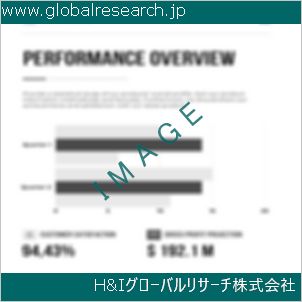Table of Contents
1 Industry Overview of Butanol
1.1 Definition and Specifications of Butanol
1.1.1 Definition of Butanol
1.1.2 Specifications of Butanol
1.2 Classification of Butanol
1.3 Applications of Butanol
1.3.1 Nuclear Application
1.3.2 Non-Nuclear Application
1.4 Industry Chain Structure of Butanol
1.5 Industry Overview and Major Regions Status of Butanol
1.5.1 Industry Overview of Butanol
1.5.2 Global Major Regions Status of Butanol
1.6 Industry Policy Analysis of Butanol
1.7 Industry News Analysis of Butanol
2 Manufacturing Cost Structure Analysis of Butanol
2.1 Raw Material Suppliers and Price Analysis of Butanol
2.2 Equipment Suppliers and Price Analysis of Butanol
2.3 Labor Cost Analysis of Butanol
2.4 Other Costs Analysis of Butanol
2.5 Manufacturing Cost Structure Analysis of Butanol
2.6 Manufacturing Process Analysis of Butanol
3 Technical Data and Manufacturing Plants Analysis of Butanol
3.1 Capacity and Commercial Production Date of Global Butanol Major Manufacturers in 2023
3.2 Manufacturing Plants Distribution of Global Butanol Major Manufacturers in 2023
3.3 R&D Status and Technology Source of Global Butanol Major Manufacturers in 2023
3.4 Raw Materials Sources Analysis of Global Butanol Major Manufacturers in 2023
4 Capacity, Production and Revenue Analysis of Butanol by Regions, Types and Manufacturers
4.1 Global Capacity, Production and Revenue of Butanol by Regions 2019-2024
4.2 Global and Major Regions Capacity, Production, Revenue and Growth Rate of Butanol 2019-2024
4.3 Global Capacity, Production and Revenue of Butanol by Types 2019-2024
4.4 Global Capacity, Production and Revenue of Butanol by Manufacturers 2019-2024
5 Price, Cost, Gross and Gross Margin Analysis of Butanol by Regions, Types and Manufacturers
5.1 Price, Cost, Gross and Gross Margin Analysis of Butanol by Regions 2019-2024
5.2 Price, Cost, Gross and Gross Margin Analysis of Butanol by Types 2019-2024
5.3 Price, Cost, Gross and Gross Margin Analysis of Butanol by Manufacturers 2019-2024
6 Consumption Volume, Consumption Value and Sale Price Analysis of Butanol by Regions, Types and Applications
6.1 Global Consumption Volume and Consumption Value of Butanol by Regions 2019-2024
6.2 Global and Major Regions Consumption Volume, Consumption Value and Growth Rate of Butanol 2019-2024
6.3 Global Consumption Volume and Consumption Value of Butanol by Types 2019-2024
6.4 Global Consumption Volume and Consumption Value of Butanol by Applications 2019-2024
6.5 Sale Price of Butanol by Regions 2019-2024
6.6 Sale Price of Butanol by Types 2019-2024
6.7 Sale Price of Butanol by Applications 2019-2024
6.8 Market Share Analysis of Butanol by Different Sale Price Levels
7 Supply, Import, Export and Consumption Analysis of Butanol
7.1 Supply, Consumption and Gap of Butanol 2019-2024
7.2 Global Capacity, Production, Price, Cost, Revenue, Supply, Import, Export and Consumption of Butanol 2019-2024
7.3 USA Capacity, Production, Price, Cost, Revenue, Supply, Import, Export and Consumption of Butanol 2019-2024
7.4 EU Capacity, Production, Price, Cost, Revenue, Supply, Import, Export and Consumption of Butanol 2019-2024
7.5 China Capacity, Production, Price, Cost, Revenue, Supply, Import, Export and Consumption of Butanol 2019-2024
7.6 Japan Capacity, Production, Price, Cost, Revenue, Supply, Import, Export and Consumption of Butanol 2019-2024
8 Major Manufacturers Analysis of Butanol
8.1 Manufacturer One
8.1.1 Company Profile
8.1.2 Product Picture and Specifications
8.1.2.1 Type I
8.1.2.2 Type II
8.1.2.3 Type III
8.1.3 Capacity, Production, Price, Cost, Gross and Revenue
8.1.4 Contact Information
8.2 Manufacturer Two
8.2.1 Company Profile
8.2.2 Product Picture and Specifications
8.2.2.1 Type I
8.2.2.2 Type II
8.2.2.3 Type III
8.2.3 Capacity, Production, Price, Cost, Gross and Revenue
8.2.4 Contact Information
8.3 Manufacturer Three
8.3.1 Company Profile
8.3.2 Product Picture and Specifications
8.3.2.1 Type I
8.3.2.2 Type II
8.3.2.3 Type III
8.3.3 Capacity, Production, Price, Cost, Gross and Revenue
8.3.4 Contact Information
8.4 Manufacturer Four
8.4.1 Company Profile
8.4.2 Product Picture and Specifications
8.4.2.1 Type I
8.4.2.2 Type II
8.4.2.3 Type III
8.4.3 Capacity, Production, Price, Cost, Gross and Revenue
8.4.4 Contact Information
8.5 Manufacturer Five
8.5.1 Company Profile
8.5.2 Product Picture and Specifications
8.5.2.1 Type I
8.5.2.2 Type II
8.5.2.3 Type III
8.5.3 Capacity, Production, Price, Cost, Gross and Revenue
8.5.4 Contact Information
…
9 Marketing Trader or Distributor Analysis of Butanol
9.1 Marketing Channels Status of Butanol
9.2 Traders or Distributors with Contact Information of Butanol by Regions
9.3 Ex-work Price, Channel Price and End Buyer Price Analysis of Butanol
9.4 Regional Import, Export and Trade Analysis of Butanol
10 Industry Chain Analysis of Butanol
10.1 Upstream Major Raw Materials Suppliers Analysis of Butanol
10.1.1 Major Raw Materials Suppliers with Contact Information Analysis of Butanol
10.1.2 Major Raw Materials Suppliers with Supply Volume Analysis of Butanol by Regions
10.2 Upstream Major Equipment Suppliers Analysis of Butanol
10.2.1 Major Equipment Suppliers with Contact Information Analysis of Butanol
10.2.2 Major Equipment Suppliers with Product Pictures Analysis of Butanol by Regions
10.3 Downstream Major Consumers Analysis of Butanol
10.3.1 Major Consumers with Contact Information Analysis of Butanol
10.3.2 Major Consumers with Consumption Volume Analysis of Butanol by Regions
10.4 Supply Chain Relationship Analysis of Butanol
11 Development Trend of Analysis of Butanol
11.1 Capacity, Production and Revenue Forecast of Butanol by Regions and Types
11.1.1 Global Capacity, Production and Revenue of Butanol by Regions 2024-2029
11.1.2 Global and Major Regions Capacity, Production, Revenue and Growth Rate of Butanol 2024-2029
11.1.3 Global Capacity, Production and Revenue of Butanol by Types 2024-2029
11.2 Consumption Volume and Consumption Value Forecast of Butanol by Regions, Types and Applications
11.2.1 Global Consumption Volume and Consumption Value of Butanol by Regions 2024-2029
11.2.2 Global and Major Regions Consumption Volume, Consumption Value and Growth Rate of Butanol 2024-2029
11.2.3 Global Consumption Volume and Consumption Value of Butanol by Types 2024-2029
11.2.4 Global Consumption Volume and Consumption Value of Butanol by Applications 2024-2029
11.3 Supply, Import, Export and Consumption Forecast of Butanol
11.3.1 Supply, Consumption and Gap of Butanol 2024-2029
11.3.2 Global Capacity, Production, Price, Cost, Revenue, Supply, Import, Export and Consumption of Butanol 2024-2029
11.3.3 USA Capacity, Production, Price, Cost, Revenue, Supply, Import, Export and Consumption of Butanol 2024-2029
11.3.4 EU Capacity, Production, Price, Cost, Revenue, Supply, Import, Export and Consumption of Butanol 2024-2029
11.3.5 China Capacity, Production, Price, Cost, Revenue, Supply, Import, Export and Consumption of Butanol 2024-2029
11.3.6 Japan Capacity, Production, Price, Cost, Revenue, Supply, Import, Export and Consumption of Butanol 2024-2029
12 New Project Investment Feasibility Analysis of Butanol
12.1 New Project SWOT Analysis of Butanol
12.2 New Project Investment Feasibility Analysis of Butanol
13 Conclusion of the Global Butanol (CAS 71-36-3) Industry 2024 Market Research Report
| ※参考情報 ブタノールとは、化学式C4H10Oと表されるアルコール類の一種であり、CAS番号71-36-3で知られています。ブタノールは、直鎖状の構造を有する4炭素の単純なアルコールで、通常、無色で粘性があり、酒精のような強い匂いを持っています。その特性から、さまざまな用途に利用されています。 ブタノールには、いくつかの異性体が存在します。主に1-ブタノール、2-ブタノール(シス・トランス異性体がある)、およびアイソブタノール(2-メチル-1プロパノール)という3つの異性体が一般的です。これらの異性体は、それぞれ異なる化学的特性や物理的特性を持ち、用途や反応性も異なります。 1-ブタノールは、一般的に最も多く使用される形態で、主に溶剤や中間体として、あるいは化学合成の過程で利用されます。2-ブタノールは、特に有機合成において重要であり、また溶媒や化学反応の触媒としても使用されます。アイソブタノールは、主に燃料や溶剤としての利用が広がっています。これらの異性体は、特に化学工業や製薬業界、化粧品製造の分野などで広く利用されています。 ブタノールは、さまざまな用途で特に明確な利点を持っています。溶媒としては、他の有機物質や水に対する相溶性が良好で、工業的な場面で頻繁に使用されます。また、ブタノールは、洗浄剤や破壊剤の成分としても用いられ、製造プロセス中に生じる不純物を取り除く役割を果たします。 ブタノールは、またエネルギー源としての利用も注目されています。特にバイオ燃料としての応用が進められており、バイオマスを原料とすることで、再生可能なエネルギーを生成する手段としての可能性が期待されています。このように、持続可能なエネルギーの観点からも重要な化合物であると考えられています。 さらに、ブタノールは、ポリウレタンやプラスチックの製造にも利用されることがあります。これにより、より高性能な材料を生産するための重要な役割を果たします。また、化粧品や香料の業界においても、ブタノールは香料成分や添加物として利用されることがあり、その特有の香りが製品の魅力を高める手助けをしています。 特に最近では、ブタノールの代替え燃料の開発や、その高エネルギー密度に着目した研究も進められています。このような技術は、燃料効率を高め、環境への負荷を低減する可能性を秘めており、持続可能な発展に寄与することが期待されています。 安全性に関しても、ブタノールは扱いやすい化合物ですが、取扱いには注意が必要です。吸入、皮膚接触、または摂取した場合には、有害な影響を及ぼす可能性があります。したがって、工業的作業環境や研究室では適切な安全対策を講じる必要があります。 ブタノールの生産方法には、複数のアプローチが存在します。化学的には、プロピレンを出発原料とし、化学反応を経てブタノールを得る方法が一般的です。生物学的な手法としては、発酵技術を用いた生物由来のブタノール生産も注目されています。このような手法は、エネルギーの持続可能性を向上させ、環境に優しい製造方法を提供するでしょう。 まとめますと、ブタノールは重要な化学物質であり、その多様な異性体と特性は、さまざまな産業における用途を支えています。溶媒、燃料、化学合成の中間体など、幅広い分野で応用されているブタノールは、持続可能なエネルギーや材料の開発においても重要な役割を果たすことが期待されています。今後の研究や技術の進展により、より一層その利用価値が高まっていくことでしょう。 |
❖ 免責事項 ❖
http://www.globalresearch.jp/disclaimer

-gr.jpg)










